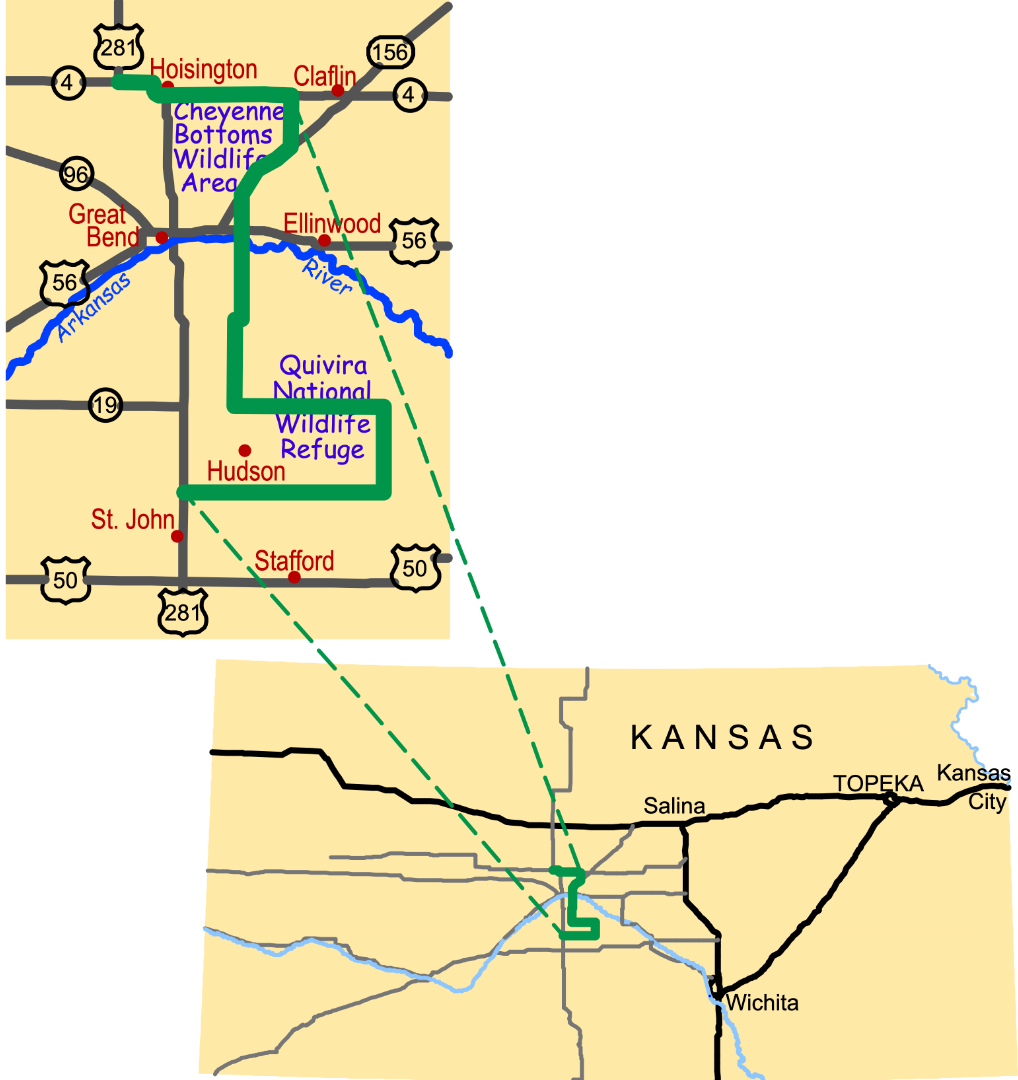Working...

Prey and Play
Hunting and Wildlife-Watching Along the Byway
For thousands of years, Native Americans relied on this region's wildlife for sustenance. Early settlers, too, depended on bison, deer, and birds drawn to the region's water and forage. As settlements expanded, unregulated hunting took its toll-by the early 1900s, market hunters were harvesting tens of thousands of ducks, geese, and shorebirds annually from local marshes. New game laws curtailed commercial hunting, and private hunting clubs became established-as many as seventeen in and around what is now the Quivira National Wildlife Refuge. In 1955, the federal government purchased much of this hunting club land to form the Refuge.
Hunting*, particularly for waterfowl, remains an important way of life along the Byway. In recent years, though, hunters have been joined by an increasing number of people who enjoy wildlife through viewing and photography. All these wildlife-related activities have a huge economic impact on local businesses and communities.
Recreation and Conservation
Dollars generated by hunters and anglers through excise taxes, licenses, and permits fund important local conservation work through state and federal agencies. The Nature Conservancy and other non-governmental organizations assist in habitat restoration and land acquisition. Their efforts assure a fertile future for our wetlands and wildlife. Nature Conservancy Fact Sheet
Motion and Change
More than 70 million Americans explore nature through watching birds. There's no better place to celebrate birds and birding than on our Wetlands & Wildlife National Scenic Byway, the nation's first Birding Byway! This region's on-going conservation commitment helps keep the Byway area a haven for wildlife and wildlife watchers.
Download the interpretive panel: Prey and Play Panel located at the Cheyenne Bottoms Scenic Overlook on K-4 Hwy.
To listen to more information click on the Audio Tour
Go to the Gallery to view photographs contributed by visitors to the Byway.
* Hunting Along the Byway
The Byway region is a hunter's paradise. Wetlands, grasslands, and grain crops entice pheasant, quail, duck, geese, turkey and deer in the area. Great hunting and great hunting resources make the Byway region a perfect place to base a hunting adventure.
Quivira National Wildlife Refuge. Hunting for waterfowl, quail, pheasant, dove, snipe, rails, squirrels, and rabbits is permitted on Quivira NWR. Call ahead for hunting information at 620-486-2393. When you arrive, stop by the Visitors Center or one of the many information kiosks located around the Refuge to get a copy of the most recent Refuge hunting regulations, which may differ from general state regulations. For more information visit the Quivira NWR Website
Cheyenne Bottoms State Wildlife Area. Hunters flock to Cheyenne Bottoms during waterfowl season, particularly on weekends. Hunters planning trips to the Bottoms should consider weekday hunts when hunting pressure is lower and there is less demand for blind permits. Contact the Cheyenne Bottoms State Wildlife Area at (620) 793-3066 or visit their website for more information.
Public & Walk-In Hunting. There are over 60,000 acres of public hunting areas within 60 miles of Great Bend (13,000 of those acres are only 7 miles away at Cheyenne Bottoms; 8,000 acres are only 25 miles away at Quivira). In addition, Kansas Wildlife and Parks leases 50,000 acres of private land within 60 miles of Great Bend specifically for walk-in hunting. Hunting on land leased by the state of Kansas does not require land owner permission. To receive a copy of the Kansas Walk-In Hunting Area Atlas, contact the Kansas Department of Wildlife, Parks and Tourism at 620-672-5911 or visit their website.
More Birds and Wildlife pages...
Birds of the Woods and Prairie
Birds of the Wetlands and Water
Wings Over the Water
Home on the Range
Jackrabbit Run
Magic Muck



